5 Edge AI Trends Shaping the Future of Automotive Intelligence
The automotive world is undergoing a major transformation, and rapidly emerging edge AI trends play a key role in this significant paradigm shift. Vehicles are no longer just simple means of transportation: they have evolved into the so-called "rolling computers," a comprehensive system of sensors, algorithms, processors, and connectivity that continuously gather, forecast, and act. In this regard, edge AI, which processes data locally and in real-time, appears to be a powerful attribute of this transformation. So, what is edge AI, and why do we need it in the automotive industry? What are the key edge AI trends that drive the future of automotive intelligence? In this article, we will introduce five major edge AI trends, describing what they are, why they matter, and how they are applied in practice. Read on to keep pace with innovative technology.
In short, today we will talk about:
- The definition of edge AI automotive intelligence (spoiler alert: location is a key).
- The key applications of edge AI trends include advanced driver-assistance systems (ADAS), personalized driver experience, driver behavior tracking & analysis, and predictive vehicle maintenance.
- The top 5 edge AI trends in the automotive industry: ultra-low latency perception & decision-making, hybrid edge-cloud architectures & federated learning, personalized experiences & adaptive systems, in-sensor edge AI intelligence, and vehicle-to-everything (V2X) & edge cooperation.
- At devabit, we believe the true significance of edge AI trends lies in statistics, so scroll down to find out a detailed statistical edge AI trends overview.
- Explore our edge AI automotive intelligence capabilities: event/incident detection, predictive maintenance & diagnostics, infotainment/personalization/voice assistants, V2X/cooperative perception/shared mapping, road/surface condition monitoring/anomaly alerts.
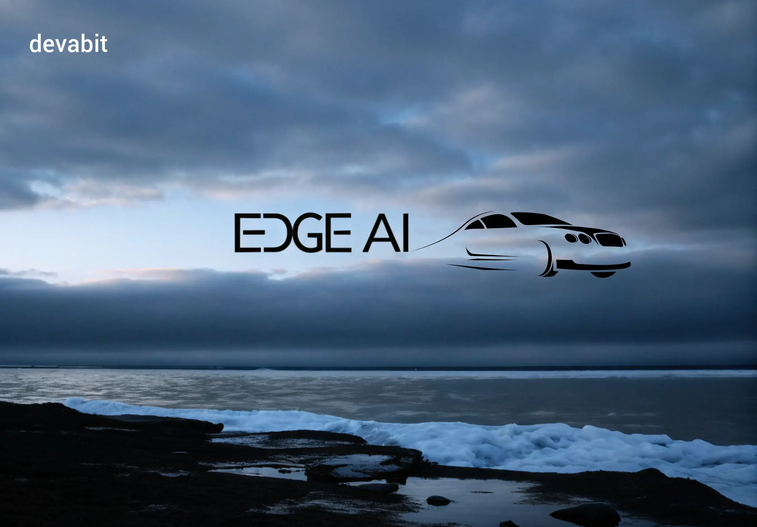
- What Is Edge AI? Edge AI Automotive Intelligence Explained In Simple Words
- Edge AI Trends Revealed: #1 Ultra-Low Latency Perception & Decision-Making
- Edge AI Trends Revealed: #2 Hybrid Edge-Cloud Architectures & Federated Learning
- Edge AI Trends Revealed: #3 Personalized Experiences & Adaptive Systems
- Edge AI Trends Revealed: #4 In-Sensor Edge Intelligence and Smarter Sensors
- Edge AI Trends Revealed: #5 Vehicle-to-Everything (V2X) & Edge Cooperation
- Edge AI Trends in Numbers
- How Devabit Can Help
- Edge AI Trends Summary
What Is Edge AI? Edge AI Automotive Intelligence Explained In Simple Words
Everything depends on the location. As always, let's explain the concept of edge AI in simple real-life terms. Imagine you are living in a house surrounded by dangerous wildlife. In one case, you receive data about hazardous weather conditions or wild animals near your household from the satellite. The data is accurate and contains predictions. However, it usually takes some time to receive and interpret information due to various factors, such as an unstable internet connection. This is basically the allegory of standard (cloud-based) artificial intelligence. In the other case, your house is equipped with innovative sensors and processors that analyze temperature, movements, and other crucial parameters of the surroundings to come up with real-time data and predictions. This is basically how edge AI works.

Simply stated, edge AI deploys AI algorithms on local devices (e.g., sensors, IoT devices, etc.) to enable real-time processing. Over and above that, edge AI does not rely on cloud infrastructure. Edge AI literally operates on the edge: AI performs machine learning tasks directly on interconnected edge devices. Accordingly, all the data are stored close to the device's location, so data processing happens on the network edge, without relying on an internet connection. Edge AI takes milliseconds to process data. Sounds impressive, doesn't it?
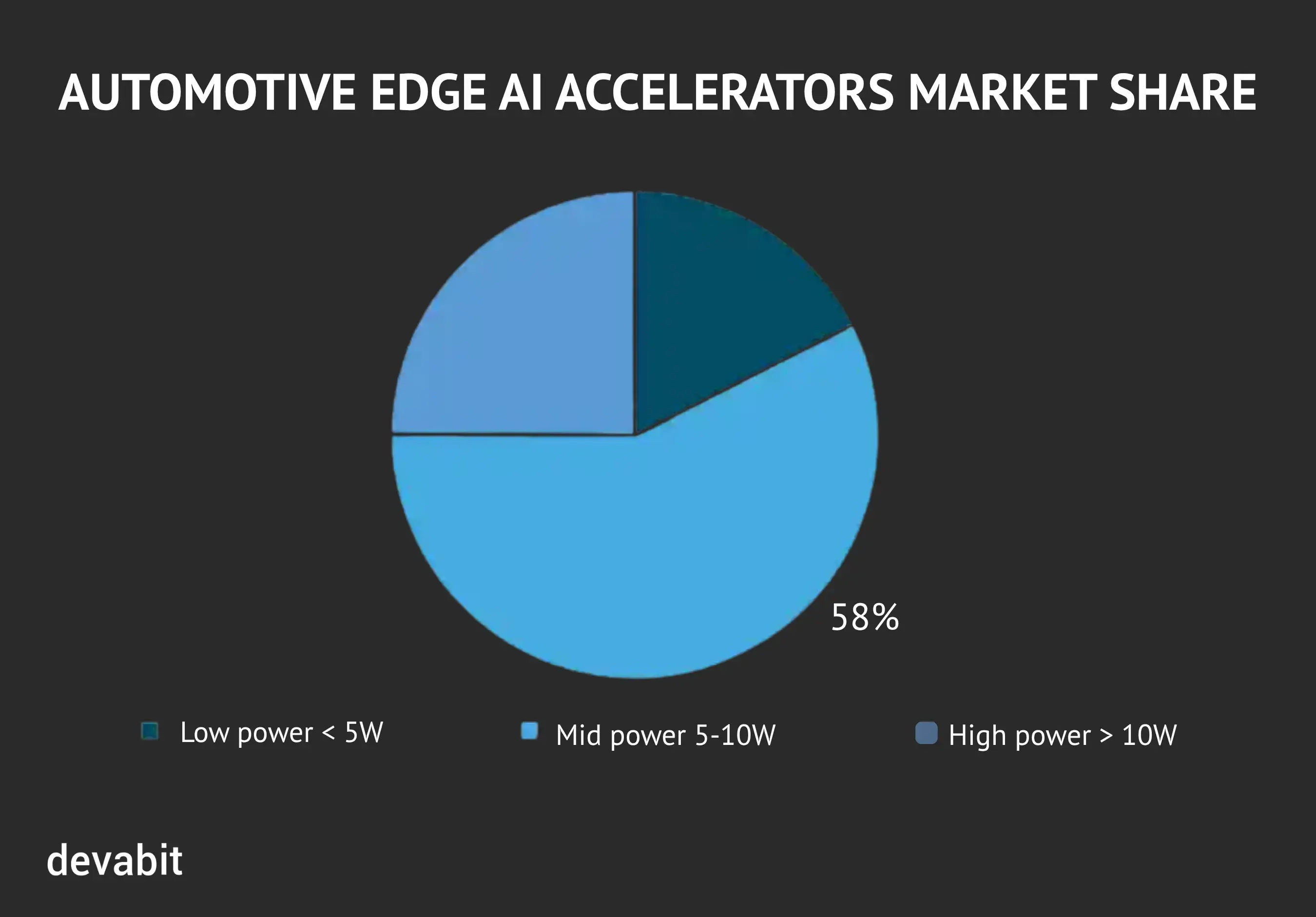
Nowadays, edge AI trends are gaining mind-blowing popularity in areas such as self-driving vehicles, smart homes, and wearable devices. This also applies to edge AI automotive intelligence: AI models run directly on a vehicle's hardware, enabling real-time analysis and driver assistance. In a nutshell, edge AI Automotive intelligence can be utilized in:
- Advanced driver-assistance systems (ADAS).
- Personalized driver experience.
- Driver behavior tracking & analysis.
- Predictive vehicle maintenance.

Edge AI Trends Revealed: #1 Ultra-Low Latency Perception & Decision-Making
Speaking of edge AI trends, it is impossible to ignore the speed of work, which definitely stands out compared to standard AI algorithms. No need for cloud infrastructure and remote servers truly makes a magical difference: data is processed immediately. This is especially crucial when it comes to vehicle safety functions like obstacle avoidance or lane-keeping (here, even seconds can save a driver's life). The concept is clear and straightforward: the more you can move decision-making into the car hardware itself, the more you can guarantee reliability, reduce dependency on connectivity, and ensure secure performance. Interesting fact to consider: in the automotive edge AI accelerators segment, the "real-time ultra-low latency perception" usage has the largest share among workloads.
The Key Benefits of Ultra-Low Latency Perception & Decision-Making:
- Fewer risks: there is no need to rely on the cloud and wait for responses since edge automotive intelligence responds immediately.
- Next-gen trustworthiness: local intelligence always works, regardless of internet connection.
- Cost-efficiency: for example, perception from camera/LiDAR → inference → actuation must happen fast.
Real-Life Applications:
- ADAS typically rely on edge AI when it comes to object detection, pedestrian recognition, etc.
- In-cabin sensing processing systems (e.g., driver monitoring) utilize edge AI to catch fatigue, distraction, or other crucial conditions in real-time.
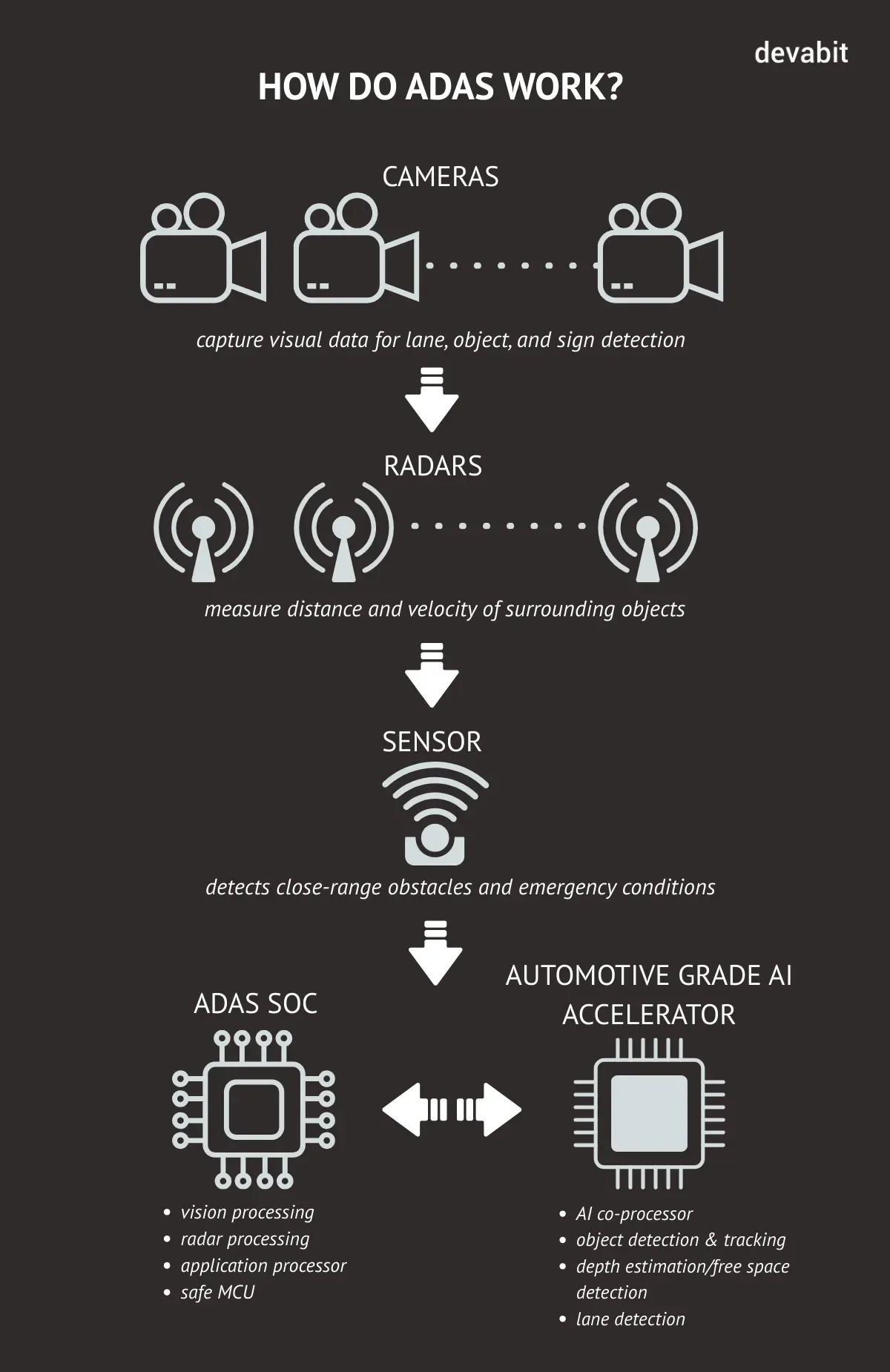
Edge AI Trends Revealed: #2 Hybrid Edge-Cloud Architectures & Federated Learning
As we have already sorted out, being located directly on the device, edge AI automotive intelligence trends offer exceptional speed and reliability. Yet, not everything should run just on the vehicle. By way of illustration, workloads like large-scale model training, fleet learning, and map updates still operate in the cloud. At this point, hybrid edge-cloud architecture enters the competition of our top edge AI trends. Rather than viewing edge and cloud as competing technologies, why not let them work together? This is what hybrid edge-cloud architecture is all about. While local learning can be processed on board, aggregated data and models can be efficiently updated in the cloud and sent back to the fleet. Besides, let's mention federated learning, another approach where vehicle data is used to train models locally and updates are shared with a central server. The
Key Benefits of Hybrid Edge-Cloud Architectures & Federated Learning:
- Get the most out of both: Balanced real-time requirements (edge) with scale and model sophistication (cloud).
- Constant evolution: Continuous advancements of fleet models without compromising privacy or connectivity.
- Support capabilities: Supports feature upgrades and model refreshes across vehicle fleets.
Real-Life Applications:
- Over-the-air (OTA) updates of vehicle perception or driver-monitoring models.
- Vehicle fleets participating in aggregated learning for new environments and scenarios.
- Utilization of cloud for intensive training of models, which are then optimized and deployed to edge hardware.
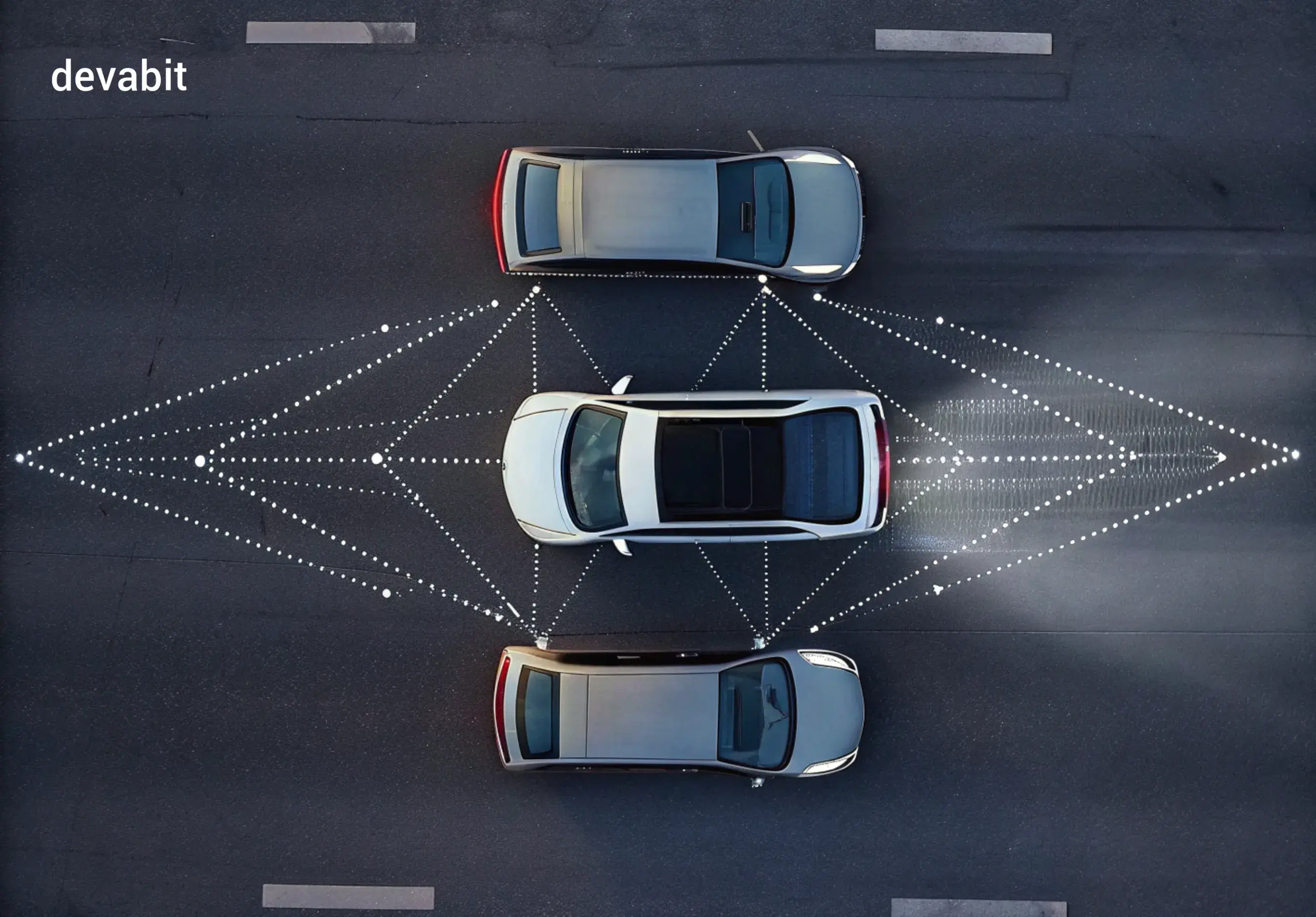
Edge AI Trends Revealed: #3 Personalized Experiences & Adaptive Systems
Edge AI trends go far beyond the clear advantages like safety, speed, and real-time perception. Edge AI trends also offer next-gen driver's experience inside the vehicle. Well, how does it work? As cars become more dependent on software, they are expected to adapt to each driver, personalize settings, assist with tasks, and even predict needs. In-vehicle automotive intelligence makes it possible, bringing driver's experiences to an entirely new level with real-time adaptiveness and extra privacy.
The Key Benefits of Edge AI Adaptive Systems:
- Competitive advantage: personalized experiences are a popular feature for attracting modern car buyers. According to McKinsey, premium buyers choose brands that offer better digital features.
- Comfort with privacy: in-car edge AI adaptive systems personalize drivers' experiences without sharing data externally.
- Complete latency: personalized experiences like voice assistants or gesture interpretation benefit from local processing.
Real-Life Applications:
- In-cabin sensing handles driver monitoring, mood or gesture recognition, and adjusting the environment (lighting, seat position, etc.).
- Voice assistants embedded in-vehicle run on edge hardware for rapid responses.
- The vehicle equipped with edge AI automotive intelligence learns driver behaviors and proactively adjusts settings.
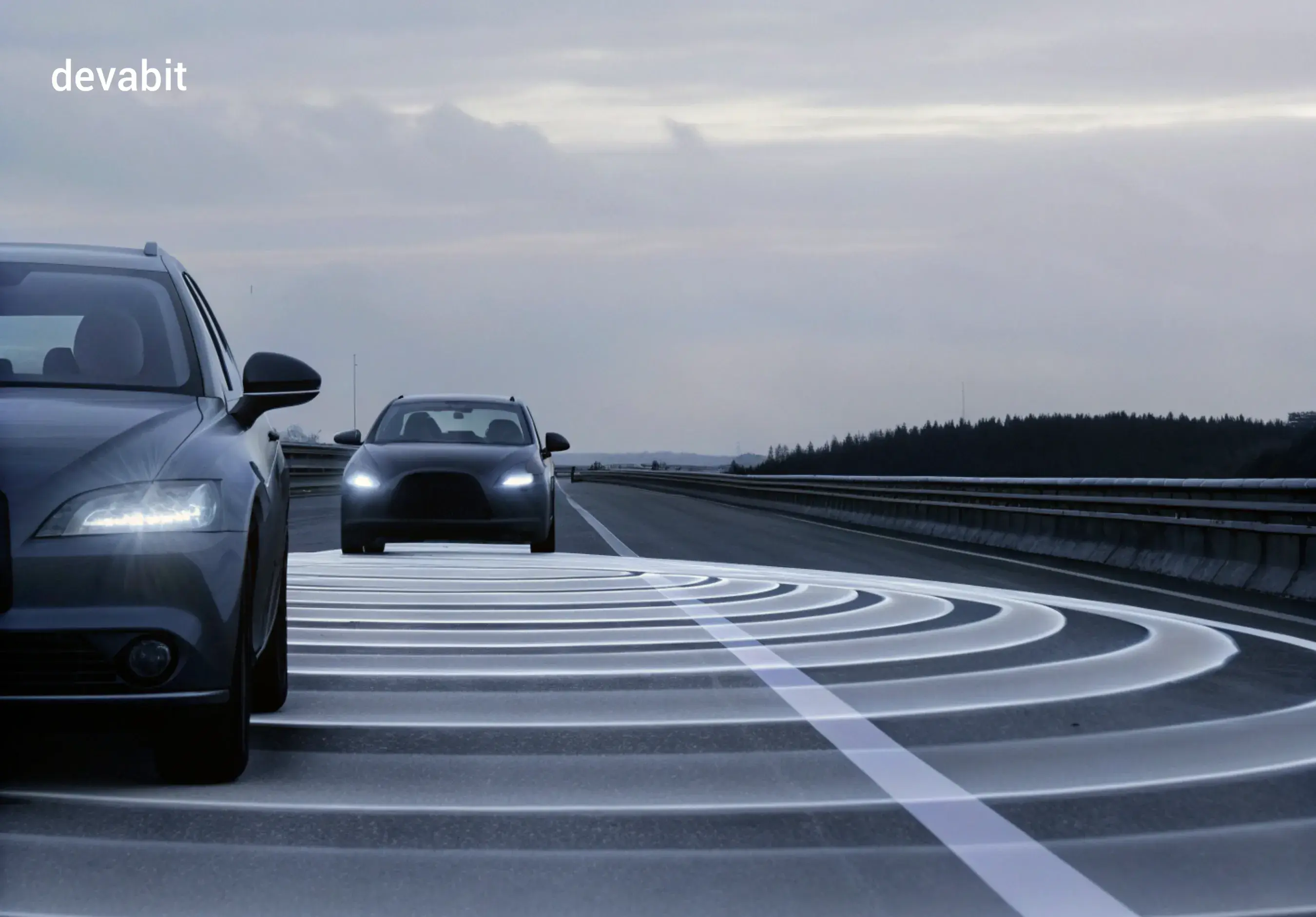
Edge AI Trends Revealed: #4 In-Sensor Edge Intelligence and Smarter Sensors
Another notable edge AI trends refer to the "edge of the edge" (near the sensors themselves). In this case, there is no need to stream data from a camera to a central compute module. Here we are talking about in-sensor vision processing. Thus, a part of pre-processing happens at the sensor node. This, in turn, reduces data bandwidth, latency, and power consumption.
The Key Benefits of In-Sensor Edge AI Intelligence:
- Lower data volumes: fewer bits moving across the vehicle's data fabric, reducing back-ups.
- Faster responsiveness: sensor data is partially processed before reaching the central controller.
- Energy efficiency: reduced need for large transfers and heavy compute loads downstream.
Real-Life Applications:
- Cameras with embedded edge processors perform object detection/tracking.
- Radar/LiDAR units perform on-unit classification or filtering, passing only "interesting" events.
- Sensor modules that perform "early fusion" of data (e.g., camera + radar) and output higher-level data to the compute domain.

Edge AI Trends Revealed: #5 Vehicle-to-Everything (V2X) & Edge Cooperation
The last but not least place in our edge AI trends analysis belongs to the increasing collaboration between vehicles and infrastructure, other vehicles, cloud services, and edge nodes, also known as Vehicle-to-Everything (V2X) communication. This trend is not only about running edge AI algorithms inside the vehicle, but also about broadening this concept to communication, sharing insights, and cooperation with roadside edge nodes. Examples? Think at least of dynamic mapping, collaborative perception, and platooning.
The Key Benefits of Vehicle-to-Everything (V2X) & Edge Cooperation:
- Shared situational awareness: cars benefit from what other vehicles or infrastructure sense, resulting in faster incident detection and better path planning.
- Offload opportunities: some workloads too heavy for in-vehicle compute may be offloaded to roadside edge servers or cloud edge nodes.
- Ecosystem scaling: as smart cities and infrastructure evolve, the automotive intelligence must interoperate with external systems.
Real-Life Applications:
- Vehicles exchange data with roadside units (RSUs) for hazard warnings.
- Edge nodes process data from many vehicles, feeding back refined models or aggregated insights to cars.
- Smart platooning of trucks where vehicles coordinate via V2X.
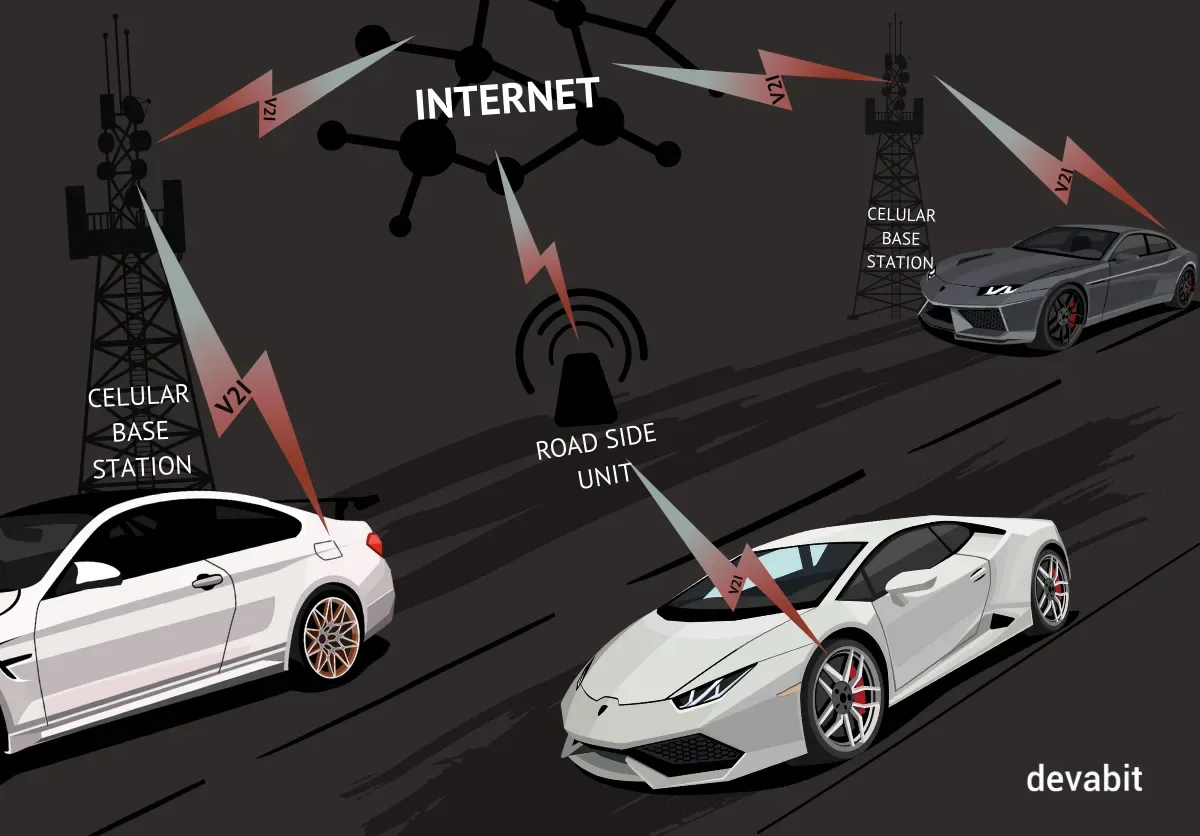
Edge AI Trends in Numbers
The above-mentioned edge AI trends offer a wide selection of innovative technology to wrap your head around. Yet, we believe the true difference hides in numbers. Hence, let's take a look at the short statistical overview of edge AI automotive intelligence to prove that edge AI trends truly lead the future of the automotive industry:
- The Asia-Pacific region leads with 39% of total edge AI automotive revenue.
- Edge AI processors & SoCs command up to 30% market share.
- Operating systems & hypervisors dominate with approximately 50% share.
- ADAS accounts for more than 50% of edge AI automotive intelligence deployments.
- Tier-1 integrated platforms lead with up to 45% share.
- Speaking of connectivity, 5G C-V2X dominates with 45% share, while DSRC connectivity will gain notable growth over the following decade.
- Safety-certified real-time inference represents nearly 55% of demand, with security-critical processing rising at the highest CAGR.
- The most popular AI workload type refers to real-time perception tasks, which hold up to a 50% share.
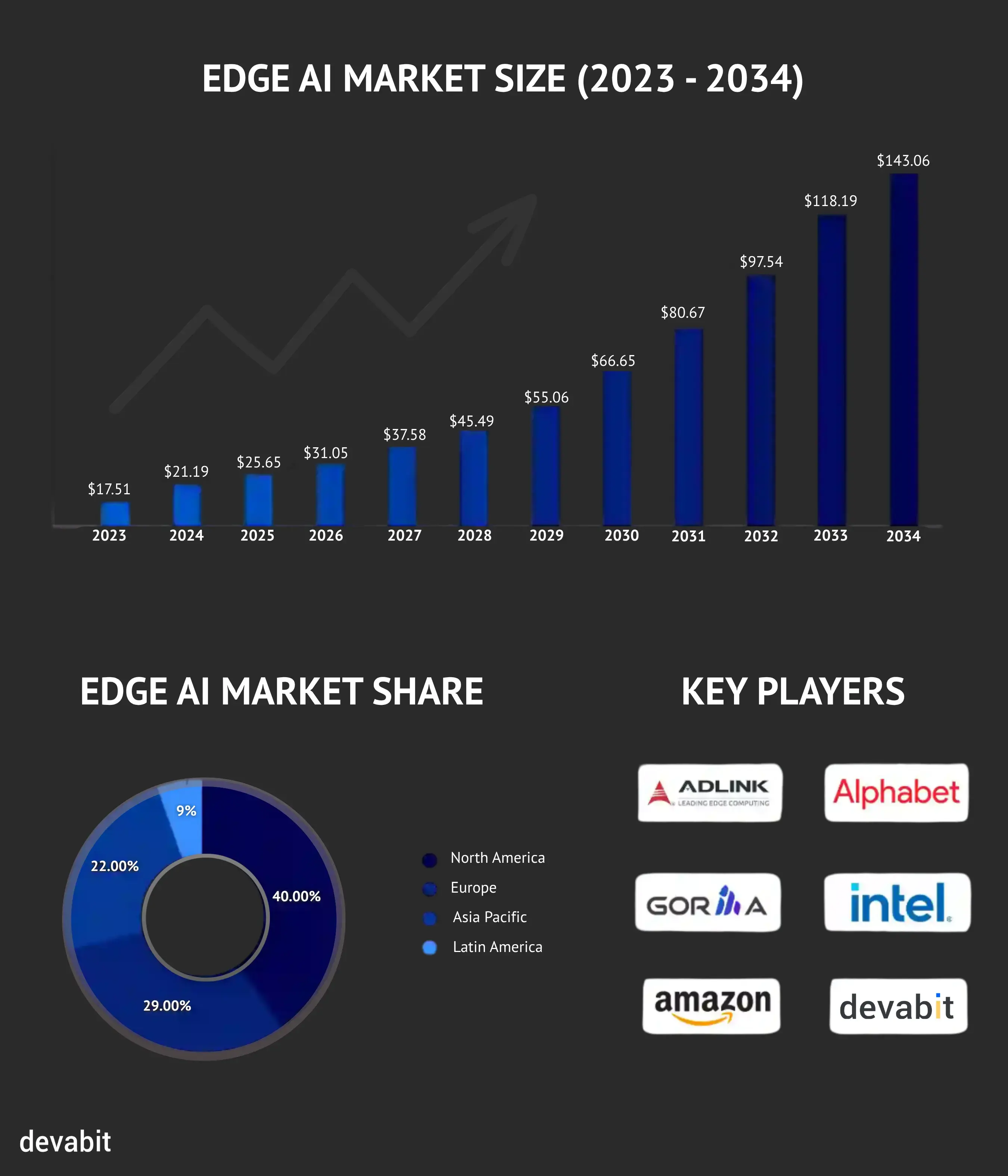
How Devabit Can Help
Keeping an eye on emerging technology trends, the devabit team always broadens our expertise to come up with innovative solutions that lead the edge of the automotive industry. Below, we have gathered several edge AI automotive intelligence aspects we can potentially help you with:
- Event / Incident Detection
Detect collisions, sudden braking, rollover, impact, powered by on-device threshold/model detection, fusion of accelerometers/video.
- Predictive Maintenance & Diagnostics
Monitor the health of the drivetrain, battery, brakes, motors, etc., to forecast failures using edge anomaly detection, trend-based models, and sensor fusion.
- Infotainment / Personalization / Voice Assistants
Contextual recommendations, adaptive UI, voice processing powered by edge or hybrid speech/NLP, and preference modeling.
- V2X / Cooperative Perception / Shared Mapping
Share perception across vehicles or with roadside units to enhance local view (e.g. hidden objects) powered by low-latency distributed inference, offloading, and map fusion.
- Road / Surface Condition Monitoring / Anomaly Alerts
Detect potholes, road slickness, sliding/loss of control conditions powered by vehicle IMU plus road sensor fusion, learning models locally.
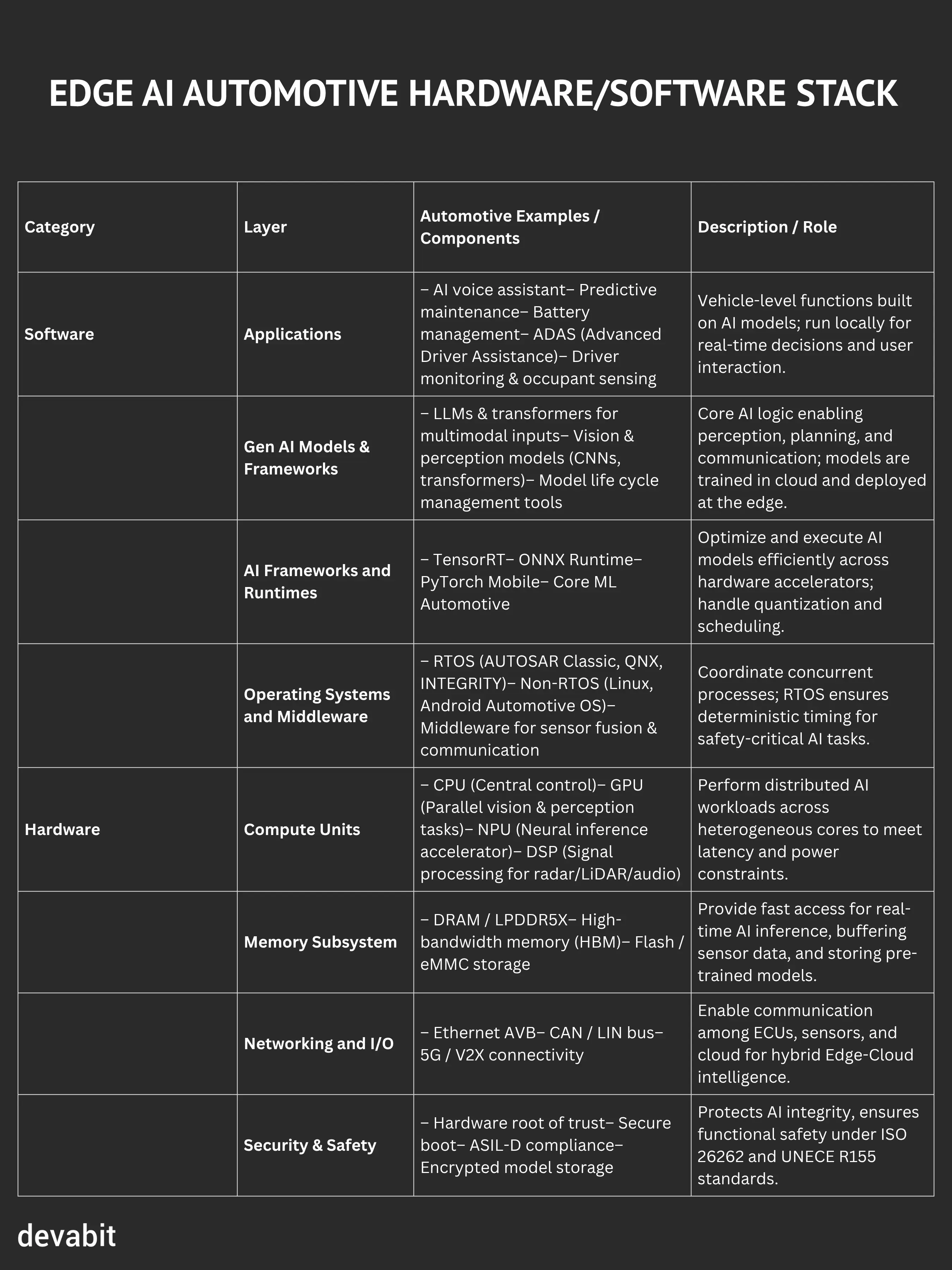
Did not find the right solution on the list? Need expert consultancy? Get a free quote for your project, just click here to reach out to our consultancy team.
Generative AI Implementation: A New Trend to Boost Edge AI
Let's be honest: we all love generative AI for its vast capabilities. Still, you will love it even more since it is moving to the edge. When models live closer to the user, on devices or sensors, you get ultra-low latency, better privacy, and context-aware experiences that feel almost instant. Are you already exploring generative AI at the edge in your product or infrastructure? Follow the link below to find out how generative AI implementation can boost your business:
Explainable AI: Critical for Trustworthy Edge AI
Since AI models are moving to the edge, AI-generated decisions affect our lives in real time. In this regard, explainable AI, also referred to as XAI, is no longer a nice-to-have feature, but a necessity. When the edge model fails, users seek immediate reasons to find out why. Here, XAI comes into play. Are you already thinking about explainability in your edge AI use cases? Follow the link below to find out more useful insights:
On a Final Note: Edge AI Trends that Transform the World of Automotive
Edge AI trends no longer represent the scary tech-powered future that waits around the corner: it is the reality we live in today. From ultra-low latency safety systems to personalized driver experiences, from hybrid architectures to cooperative vehicle-infrastructure systems, the five edge AI trends we have covered in this article demonstrate that the automotive industry is undergoing rapid transformation, and only those who adapt to emerging edge AI trends can succeed.
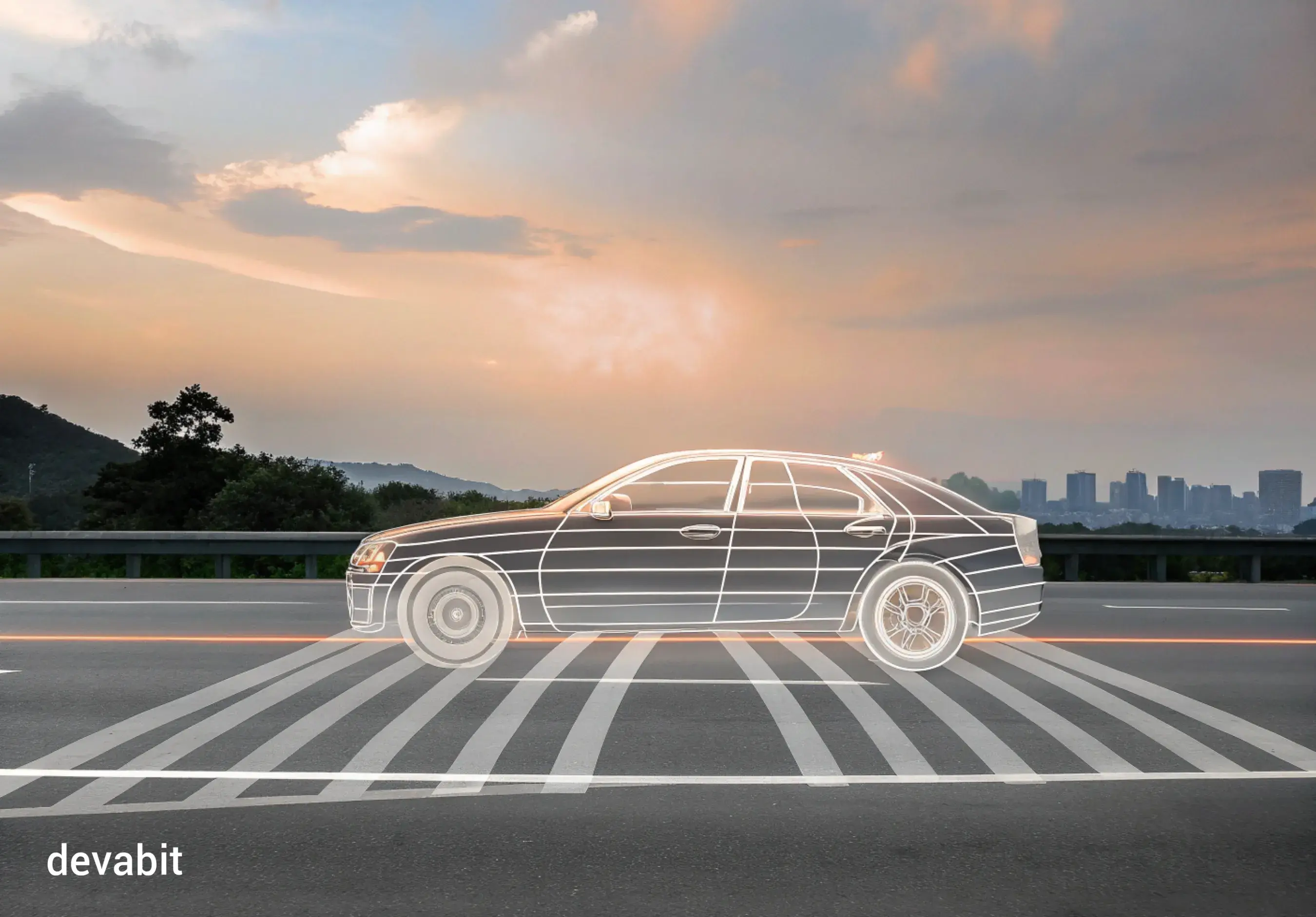
For automakers and suppliers, the goals are clear: build hardware and software architectures that can deliver intelligence at the edge; develop and deploy data/model infrastructures that scale across fleets; adopt safety and security practices to handle the new compute-defined vehicle; and engage the broader ecosystem of infrastructure, connectivity, and services. For consumers, the payoff is a vehicle that is more responsive, more secure, more intuitive, and more capable, one that reacts faster, senses better, learns you as a driver, and adapts to your world.
Recent Publications
Don't miss out! Click here to stay in touch.
Explore AI in Automotive:

Relevant Articles View all categories
View all categories CONNECT WITH US WE’RE READY
TO TALK OPPORTUNITIES
THANK YOU! WE RECEIVED YOUR MESSAGE.
Sorry
something went wrong



